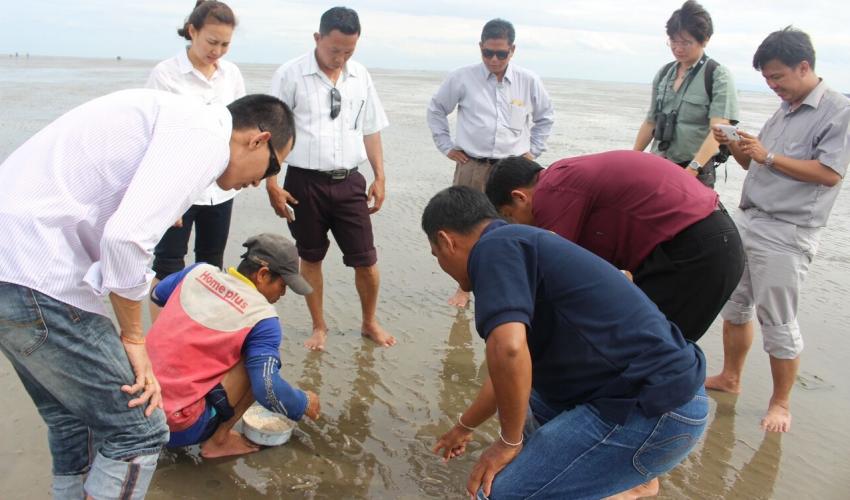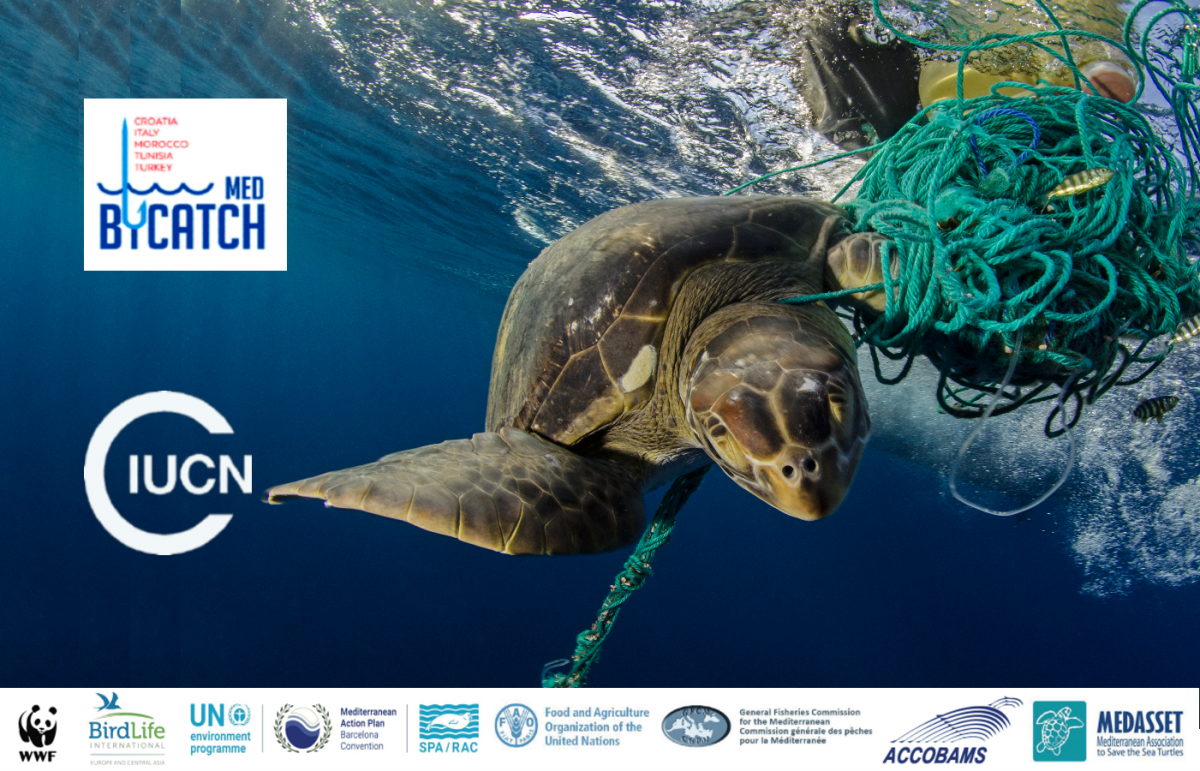From gulf to gulf: Sharing lessons on coastal wetlands between Thailand and Myanmar
In June 2016, IUCN organised an exposure visit for nine Myanmar government officials including four ministers from Mon State and Bago Region and one from the Nature and Wildlife Conservation Division in Nay Pyi Taw to the Gulf of Thailand. The purpose of the visit was to let these officials see first-hand how coastal wetlands can be effectively managed through joint community-government action.
The visit was organized by the Swiss Agency for Development and Cooperation-funded Community Led Coastal Management in the Gulf of Mottama project, a long-term initiative jointly implemented by Helvetas, NAG and IUCN to restore fisheries and support livelihoods through improved management of the natural resources of the Gulf of Mottama.
To strengthen management in line with the Ramsar Convention's wise use principles, the project is supporting the Mon State and Bago Region governments to nominate part of the Gulf of Mottama as a Ramsar site.
Lessons from the inner Gulf of Thailand
The journey began at Khok Kham Environmental Conservation Center in Samut Sakhon Province, located 50 km from Bangkok. Khok Kham produces a lot of salt and seafood and its natural resources have been threatened since the 1990s when fishers began using advanced fishing technology. About 13 years ago, a few local activists established the Khok Kham Bird Observation and Natural Resources Conservation Group, which has now grown to include 200 members who work to conserve the natural environment.
The team then learnt about a community-led mangrove restoration initiative in Bang Kaew in Samut Songkhram Province, aimed at protecting against the effects of coastal erosion. Around 80% of the local population are fishers and they have had to move repeatedly because of loss of land. The initiative was led by a community leader who was passionate about restoring mangroves and who mobilised the population to help him.
Local knowledge in the Mae Klong Delta
On the second day, the team visited Mae Klong Delta in Samut Songkhram where Mr Surajit Chirawate, a former senator in Thailand, explained the importance of incorporating indigenous knowledge in management programs.
“In the past 60 years, Thailand focused on economic growth as their National Economic and Social Development Plan was geared towards increasing production. As construction grew, the number of water channels decreased drastically. With the rise of buildings and economic development, came increased flooding resulting in annual income loss,” said Mr Chirawate.
According to local knowledge, fishing seasons, fishing grounds and fishing gear all depend on the tide, wind, and other indicators such as the sun and the moon. Government policies should take this knowledge into account.
From Don Hoi Lot Ramsar site to Pred Nai in Trat Province
The team then visited Don Hoi Lot Ramsar site where they met local managers and village leaders to discuss public participation in conservation and restoration. In Bangkok, they met officials from the Office of Natural Resources & Environmental Policy and Planning, the national Ramsar authority, and the Department of Marine and Coastal Resources and learned that Thailand has 14 designated Ramsar sites. Myanmar has two.
 Photo: Don Hoi Lot Ramsar site, Samut Songkhram © Bampen Chaiyarak
Photo: Don Hoi Lot Ramsar site, Samut Songkhram © Bampen Chaiyarak
They then visited a case of community-based mangrove conservation and management in Pred Nai in Trat Province, where in the 1980s and '90s the local people fought successfully against land confiscation and mangrove destruction by charcoal producers and shrimp farmers. Finally, in Bang Chan in Chanthaburi Province, the visitors met local people living inside the mangrove forest who were farming high value shrimp, crabs, and sea bass in ponds that include large areas of mangrove and are connected to daily tidal flows. This 'mangrove polyculture' is diverse and resilient.
Key lessons for the Gulf of Mottoma
Among key findings from the exposure visit, the ministers concluded that economic development is more than just setting up industrial zones. It also needs to build on and care for the natural environment in ways that meet basic human needs. Myanmar’s approach to natural resource management and conservation, including Ramsar site designation, should engage local leaders who advocate on behalf of the community and strengthen local civil society organisations (CSOs). Creating a network of CSOs can accelerate better natural resource management.
Shortly after returning to Myanmar, the ministers organised a follow-up workshop in Bago Region to discuss how to translate these findings into action in the Gulf of Mottoma.





